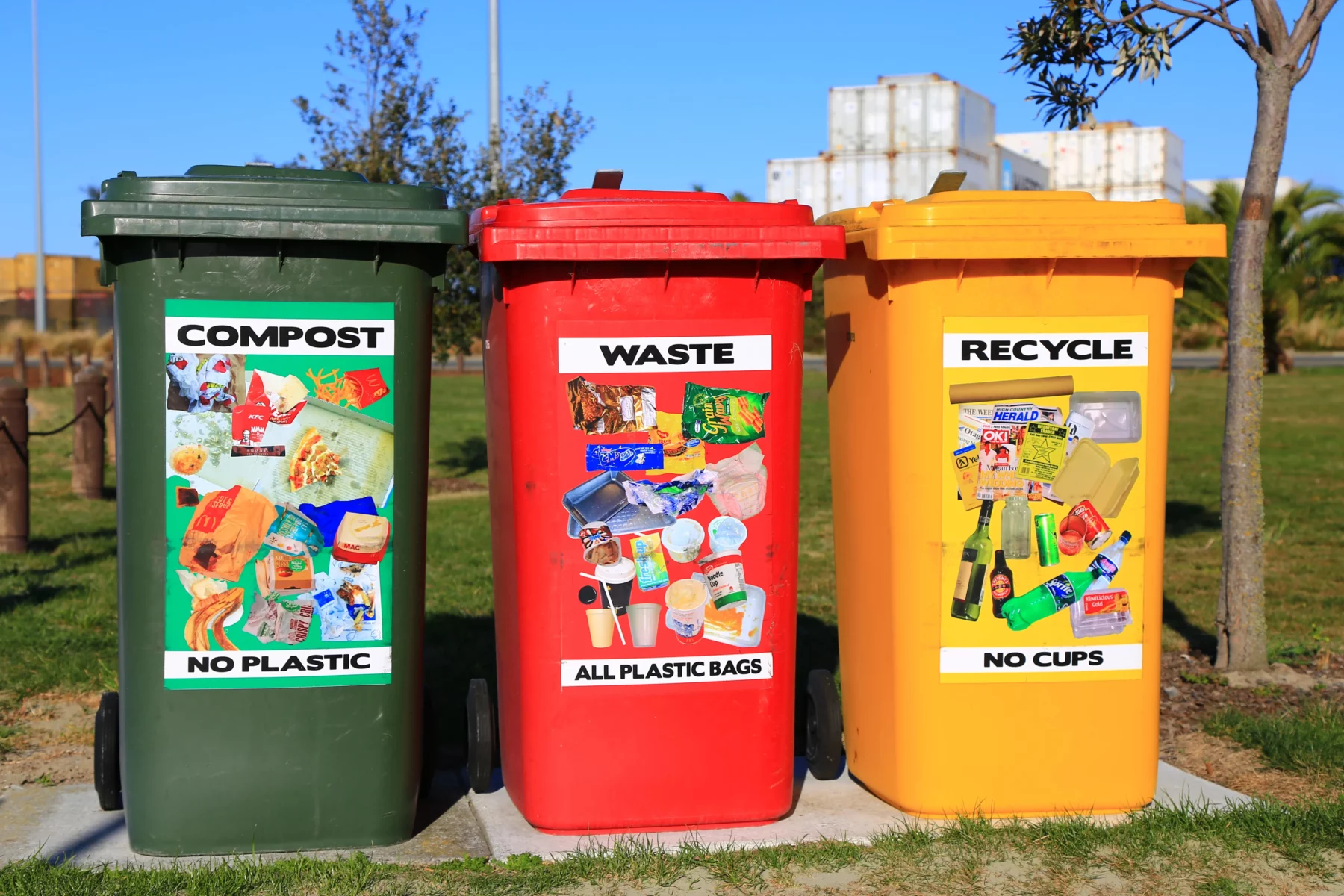(Bloomberg) —
Here are some general rules of thumb for what you can and can’t recycle across the US.
How Recycling Works
In most urban and suburban areas, Americans are encouraged to put all their recyclables into a blue bin and leave it outside for pickup. This is called single-stream recycling. Some countries consider it primitive: In Japan citizens are trained to sort their own waste into dozens of categories. But in the US we recycle or compost only about 32% of all solid waste, so we try to keep it simple.
Once collected, the contents of the bins go to a material-recycling facility, where they’re placed on a conveyor belt and sorted by a combination of humans and optical scanners. The materials that have value—glass, metal, paper, certain plastics—will be sold to recyclers. The rest will be dumped. Which items hold value depends on the technology of the facility and the aftermarket for materials, and that fluctuates. If something is made of a kind of plastic that’s expensive to recycle (a pen, for example), it will be tossed aside.
Don’t Even Think About Christmas Lights
There are some things that facilities often receive and always reject. Christmas lights are a nightmare, says Brent Bell, vice president for recycling at waste disposal giant Waste Management. Ropes and hoses should never go into your blue bin. Neither should batteries. (Towns and stores take those separately.) And don’t put your recyclables in a plastic bag: No one has time to untie it when the contents from your bin are spilled onto a conveyor belt for sorting. The whole bag may just be thrown out.
Decoding the Numbers
Most of the plastic items that come into your home have a triangle made of arrows with a number stamped in the middle. Recycling facilities almost universally take rigid plastics with a 1 or 2 (water bottles, laundry detergent containers).
Clear-plastic clamshells that contain salad greens, known as thermoforms, are labeled with a 1, but they’re a different kind of plastic than water bottles. They can be recycled in some places, but they’re still often rejected. Plastics with a 5, such as the tubs that hold yogurt and margarine, are now accepted by some programs. These are items worth asking your local authorities about.
No One Wants Your Leftovers
Putting food in your bin is a no-no. Containers don’t usually need to be rinsed, but if there are chicken bones or pizza cheese in them when they arrive at the facility, it won’t be noticed until too late and can gum up the system. Similarly, don’t leave cottage cheese or margarine caked on anything you’re tossing. If you find it gross, it will be a problem for recyclers.
Take Out (Some) Takeout Containers
With services such as Uber Eats, Americans have never ordered in more. The good news: In general, you can recycle paper containers, even if lightly coated. Go ahead and put Starbucks coffee cups in the recycling, as well as your Chinese food cartons (but pull out the metal handle). Pizza boxes are good, too, unless they’re saturated with grease. The line between an allowable amount of grease and too much is more art than science.
Unfortunately, most plastic containers are headed for the dump. Few jurisdictions take Styrofoam clamshells, because second uses for them are limited. The black plastic bottoms from many food containers end up in the trash for another reason: Optical sorters can’t distinguish them from the conveyor belt.
Smashed Glass? No Problem
Glass jars and bottles can be recycled. Don’t worry if a wine bottle shatters because you decided to launch it into the bin like a three-pointer at the buzzer: Glass recycling has evolved so much that facilities can now take tiny shards and sort them by color. But less common types of glass, such as lightbulbs or a broken mirror, contain contaminants and need to be sent to the landfill.
Amazon Boxes, Yes; Mailers, No
At one time you had to peel the plastic tape off your cardboard boxes—no longer. Plastic windows in envelopes are also acceptable. Even if you get a letter from a fundraiser that includes, say, a gift of personalized address labels, it can all go in the bin.
But some caution is required. Nothing laminated can be recycled. And mailing envelopes that are plastic or have plastic bubble interiors aren’t recyclable either. In fact, a Bloomberg Green investigation found Amazon.com Inc. and other plastic shipping envelopes bearing US addresses at dumping sites in India, where plastic is often burned.
Coming Soon to a Blue Bin Near You?
In most of the US, plastic films, such as the thin layers on top of frozen dinners, aren’t recyclable. But in November, DuPont started running a test program in two cities to collect and recycle them.
Experiments are also underway involving toys, laundry baskets and other hard-to-recycle plastic items, says Cody Marshall, chief of system optimization for the Recycling Partnership, an industry-funded nonprofit.
Read more: Investigations Into Big Plastic and the Global Recycling Problem
To contact the author of this story:
Leslie Kaufman in New York at lkaufman27@bloomberg.net
© 2023 Bloomberg L.P.





